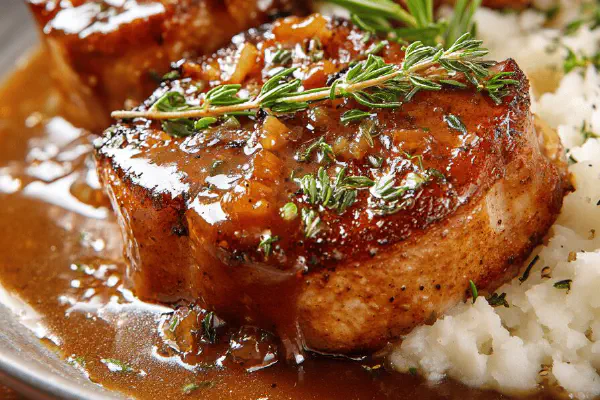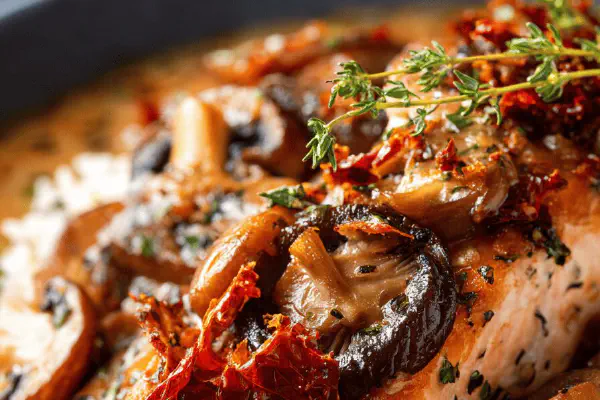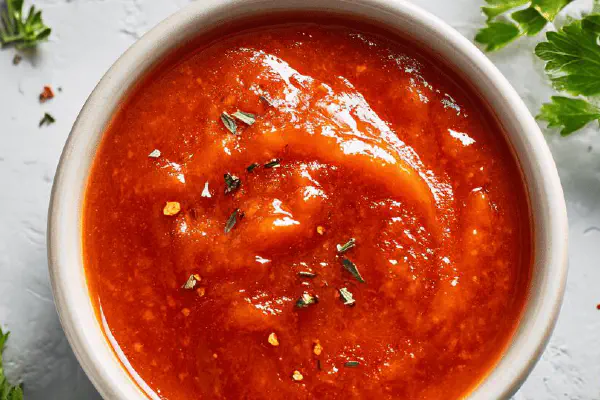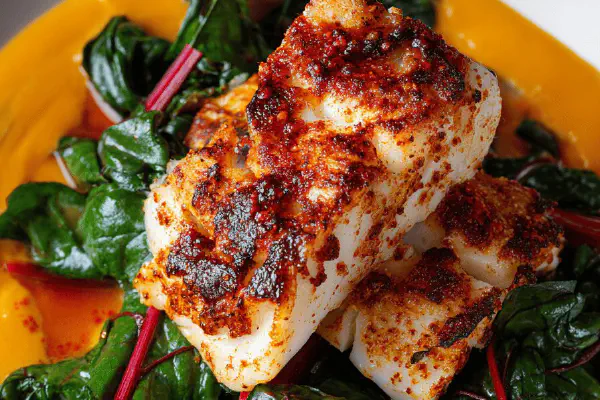Salmon Poached Horseradish Milk
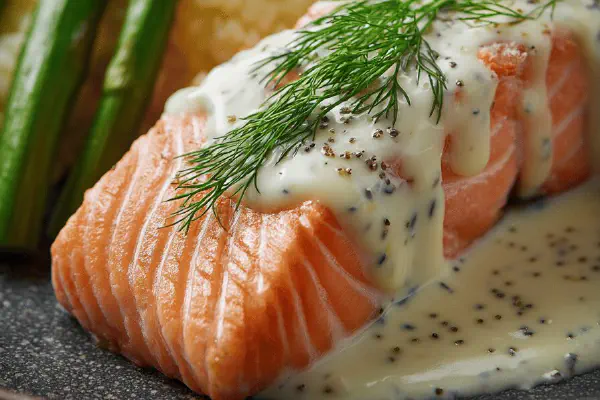
By Emma
Certified Culinary Professional
Ingredients
- 240 ml milk (1 cup 1 tablespoon)
- 20 ml creamy horseradish (about 1 1/3 tbsp from jar)
- 5 ml arrowroot powder (1 teaspoon)
- 600 g skinless salmon fillet, cut into 4 portions
- Salt and freshly cracked black pepper
- 40 ml freshly chopped dill (about 2 1/2 tbsp)
About the ingredients
Method
- Off heat, whisk milk with horseradish and arrowroot powder until dissolved; no lumps. Slowly warm over medium-low, stir constantly to prevent scorching. When tiny bubbles form at edges and milk fools around a bit, season well with salt and pepper.
- Gently nestle salmon portions in the barely simmering milk mixture. Lower heat to very gentle poach. Let each side cook about 4 minutes, skimming or stirring milk gently to avoid skin formation. Watch salmon turn pale pink and firm but tender when pressed lightly.
- Taste the milk sauce mid-cook; adjust horseradish or seasoning as needed to avoid overpowering bit — fresh dill will later brighten the finish.
- Transfer salmon portions carefully to plates. Spoon horseradish milk over the fish with fresh dill sprinkled on top. Serve immediately alongside sautéed vegetables like asparagus or green beans and nutty wild rice or quinoa.
- If milk starts to bubble too strongly or boil, reduce heat to avoid curdling. Arrowroot thickens quicker and clearer than cornstarch but overheated milk still splits.
- Alternatively, try replacing dill with tarragon for a sharper note, or swap milk for half coconut milk plus water for a dairy-free twist. Keep poaching low and slow to retain silky texture.
Cooking tips
Chef's notes
- 💡 Whisk horseradish and arrowroot powder into cold milk off heat first. Avoid lumps. Slowly heat milk under medium low; watch for tiny bubbles at edges signaling just below simmer. No roiling boil or milk splits. Stir constantly with wooden spoon to stop skin forming. Plastic tools stick easy here.
- 💡 Salmon skinless. Nestle gently into barely simmering milk; lower heat immediately to keep gentle poach. Flip after around four minutes per side. Flesh changes sight and touch—pale pink, firm but still tender under slight fork press. Timing matters; undercooked is limp, overdone turns dry and tough.
- 💡 Taste midway: horseradish can spike quickly. Adjust salt and horseradish then, not at start. Fresh dill added at end for bright herbal lift, replaces basil’s sweetness from older tries. Tarragon or chives works if you want sharper or milder twist.
- 💡 If milk boils hard or bubbles agitatedly, reduce heat quick. Arrowroot thickens faster than cornstarch but overheated milk sauce breaks, becomes grainy or split. Skim milk surface gently if skin forms despite stirring; thicker skin ruins delicate texture.
- 💡 Try swapping half milk for canned coconut milk plus water to make dairy free. Coconut aroma noticeable but balanced with horseradish sharpness. Keep heat very low when poaching; too hot ruins silky texture. Keep stirring milk lightly throughout poach to keep sauce clear.
Common questions
How to tell salmon is done without timer?
Look for pale pink color, flesh turns opaque and firm but tender. Press gently with fork, it should flake easily but not mushy. Watch the milk for tiny bubbles creating slow movement, signals gentle heat.
Can I use cornstarch instead of arrowroot powder?
Yes use cornstarch but arrowroot thickens quicker and clearer. Cornstarch sauce can be cloudier, needs more careful simmer. Avoid boiling either; milk splits easily with high heat. Stir constantly, patience helps.
Why does milk sometimes curdle during poaching?
Usually from too high heat or boiling milk hard. Keep temperature low, watch for small bubbles not aggressive boil. Overheating makes proteins break down and separate. Stir often; avoid pauses. Alternative is adding small cream splash to smooth if splits.
How to store leftovers?
Refrigerate salmon and sauce separately if possible. Store in airtight container, keep sauce chilled tight to prevent thick skin formation. Reheat gently on low heat, stir milk sauce slowly. Avoid microwave high heat; sauces separate fast.
